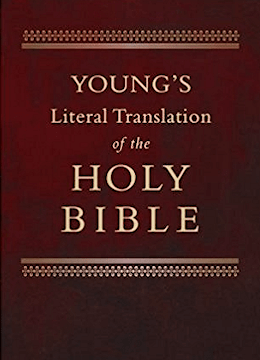Textus Receptus Bibles
Young's Literal Translation 1862
| 4:1 | And taken hold have seven women on one man, In that day, saying, `Our own bread we do eat, And our own raiment we put on, Only, let thy name be called over us, Remove thou our reproach.' |
| 4:2 | In that day is the Shoot of Jehovah for desire and for honour, And the fruit of the earth For excellence and for beauty to the escaped of Israel. |
| 4:3 | And it hath been, he who is left in Zion, And he who is remaining in Jerusalem, `Holy' is said of him, Of every one who is written for life in Jerusalem. |
| 4:4 | If the Lord hath washed away The filth of daughters of Zion, And the blood of Jerusalem purgeth from her midst, By the spirit of judgment, and by the spirit of burning. |
| 4:5 | Then hath Jehovah prepared Over every fixed place of Mount Zion, And over her convocations, A cloud by day, and smoke, And the shining of a flaming fire by night, That, over all honour a safe-guard, |
| 4:6 | And a covering may be, For a shadow by day from drought, And for a refuge, and for a hiding place, From inundation and from rain! |

Young's Literal Translation 1862
Young's Literal Translation is a translation of the Bible into English, published in 1862. The translation was made by Robert Young, compiler of Young's Analytical Concordance to the Bible and Concise Critical Comments on the New Testament. Young used the Textus Receptus and the Majority Text as the basis for his translation. He wrote in the preface to the first edition, "It has been no part of the Translator's plan to attempt to form a New Hebrew or Greek Text--he has therefore somewhat rigidly adhered to the received ones."